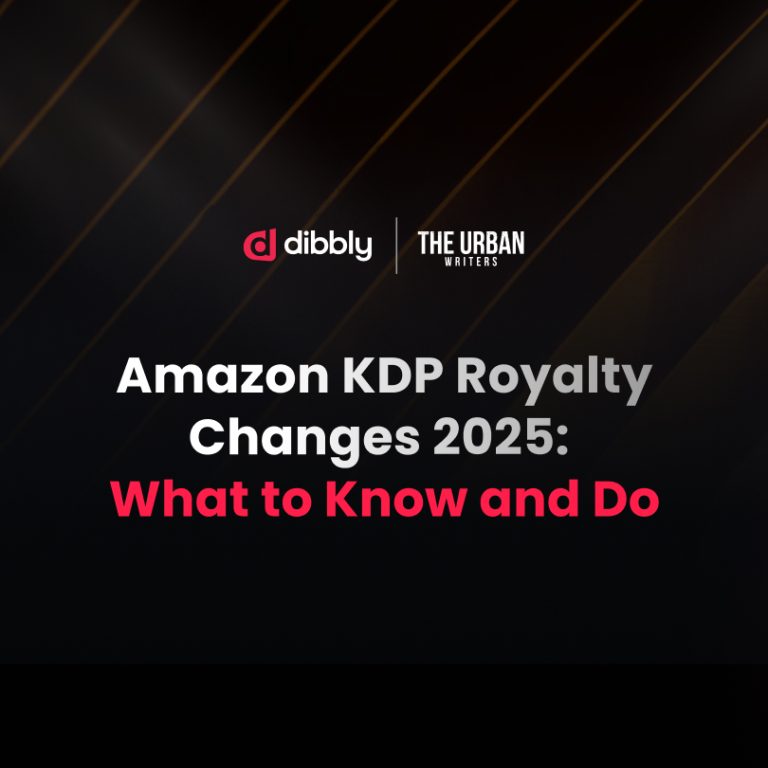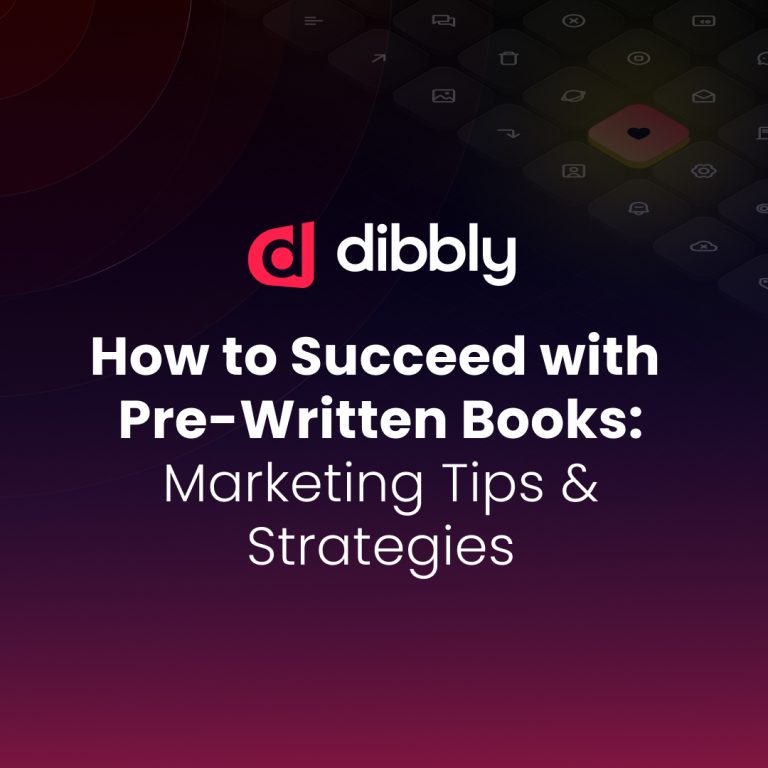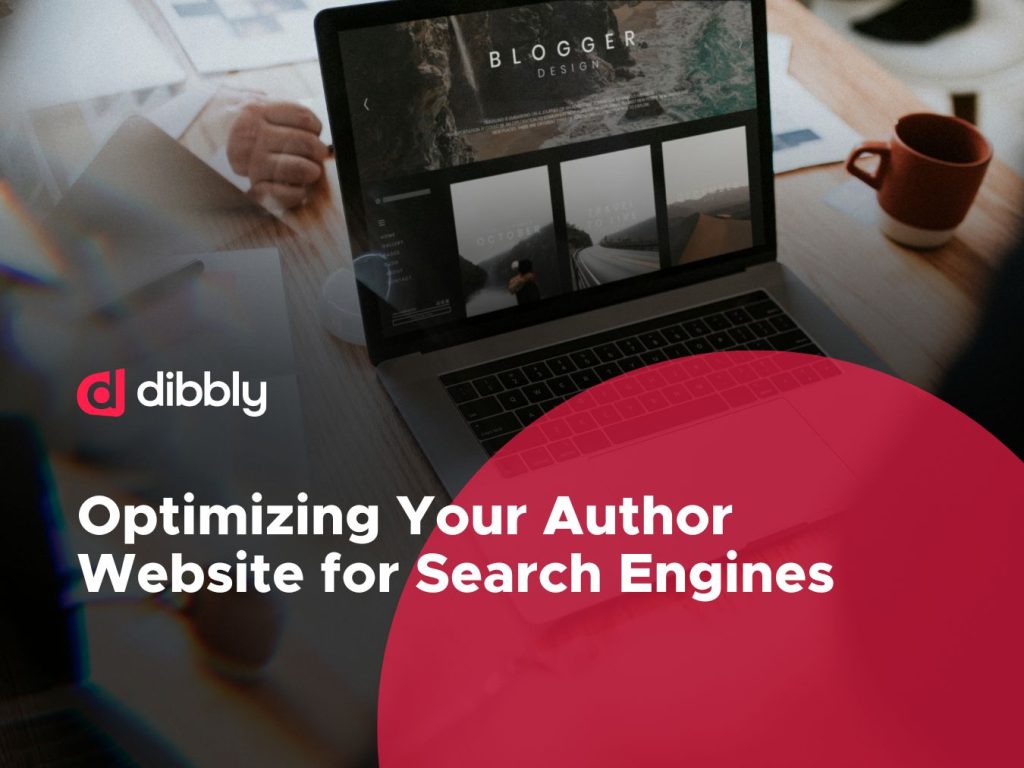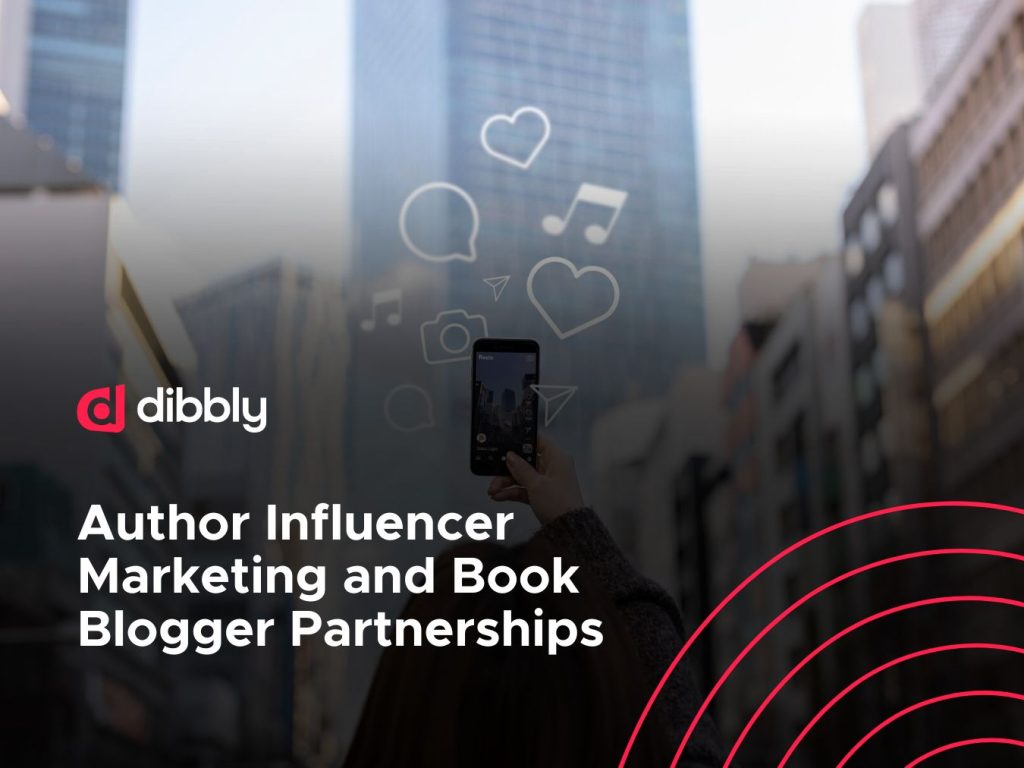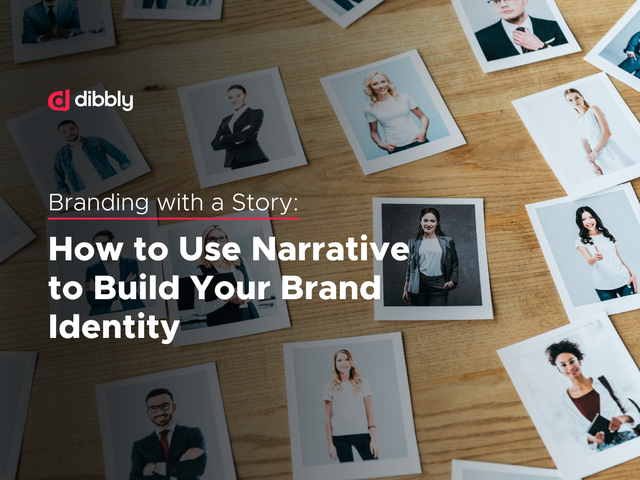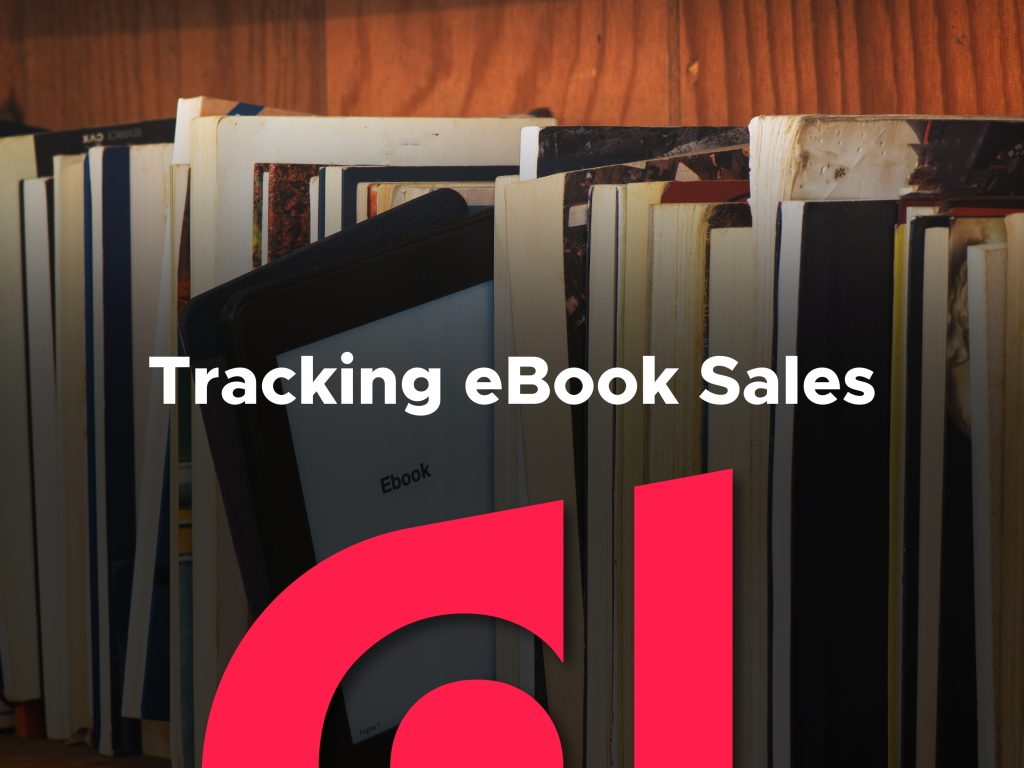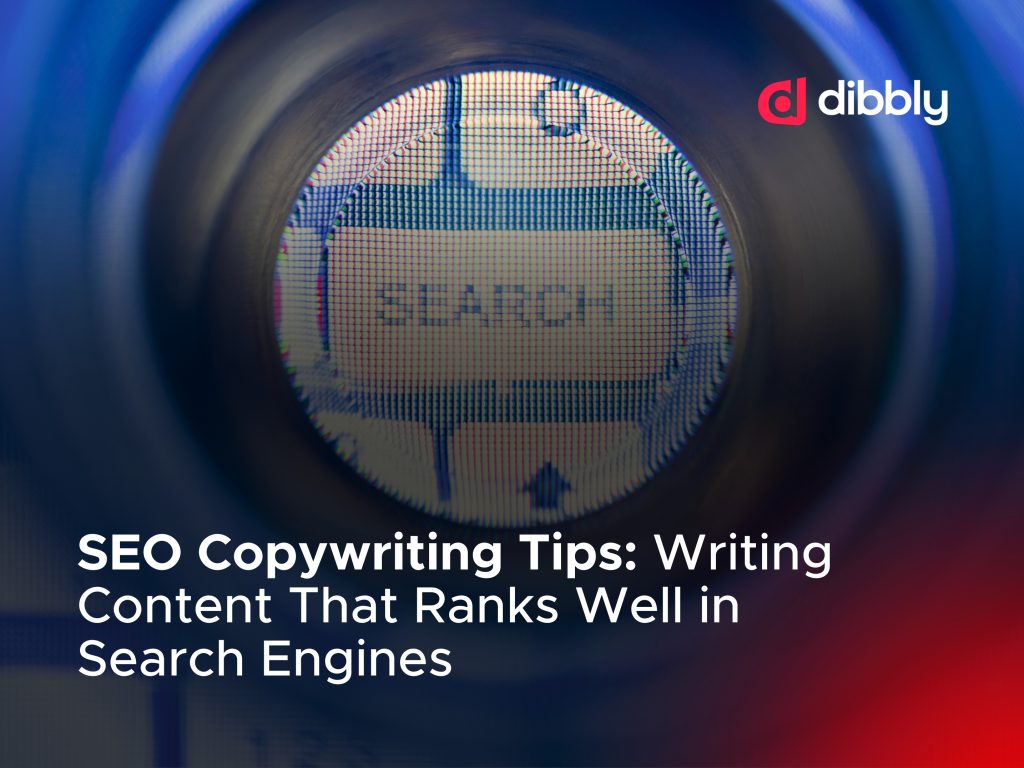AI is a term that divides crowds. Some people love it; others hate it.
But what if we told you that AI can be a game-changer? It can allow you to accelerate your work and transform your ideas into reality more swiftly than ever before.
The advanced algorithms can help you generate compelling content in a fraction of the time it traditionally takes to write an article, script, book, or whatever else you can imagine. AI for writers is transforming the creation of content, equipping you with the necessary tools to boost your creativity and simplify the writing process.
Of course, that raises another question: Which AI writing tool is the best?
Let’s look at how two popular platforms, Dibbly Create and ChatGPT, stack up.
What Are AI Writing Tools?
AI-powered writing tools are software programs that help you with different content creation tasks. These tools use artificial intelligence to examine language patterns, suggest ideas, and create text.
What type of writing do you do? Depending on your content needs, AI can help you in the following ways:
- For bloggers, AI tools make idea generation easier by suggesting topics or writing catchy headlines that get the attention of readers.
- Scriptwriters can use these tools to get quick feedback on dialogue and story pacing, ensuring their scripts flow well and connect with the audience.
- eBook authors or ghostwriters can use AI to improve their writing style, develop their plots, and create attractive summaries to draw in potential readers.
- Writing with AI can help overcome writer’s block by providing prompts or alternative phrases that allow writers to continue their creative work.
Now, AI has evolved even more, and some tools can help you write content in its entirety. Of course, you still need to provide information about your project on the AI platform.
What Is Dibbly Create?
Dibbly Create is an AI book writer platform that aims to assist writers and creatives in realizing their ideas. The focus is on content creation.
The platform offers various tools, resources, and collaboration opportunities. You can use Dibbly Create for research, brainstorming, and generating outlines and content. An image generator is in beta testing, so you can even create visual elements to accompany your text.
You can save the output from Dibbly Create in a document to access additional AI features. You can also copy the output with a single click and use it wherever you see fit or export it to an external document.
What Is ChatGPT?
OpenAI developed ChatGPT, an AI language model designed ChatGPT to understand and generate human-like text based on the input it receives.
You can use ChatGPT for various tasks like answering questions, writing content, getting explanations, and generating ideas. The platform also has image-generating capabilities.
ChatGPT uses different versions of OpenAI’s GPT-4 model, each tailored for specific use cases. GPT-4 is a basic version; GPT-4o (or open) is optimized and more efficient for full-scale modeling. GPT-4o Mini is a smaller version of GPT-4o, making it more resource-efficient and accessible.
Dibbly Create vs. ChatGPT: A Comparison
When you look for an AI writing tool, you want to choose a platform that has all the features you may need to complete your project. It has to help you with everything, like creating an outline, doing research, writing content, editing, and so on. In some cases, you might even want it to design images for you.
Both Dibbly Create and ChatGPT have these capabilities in some way, but the output is vastly different. Now, let’s examine some AI writing tool tasks and how each platform can meet them.
Prompts
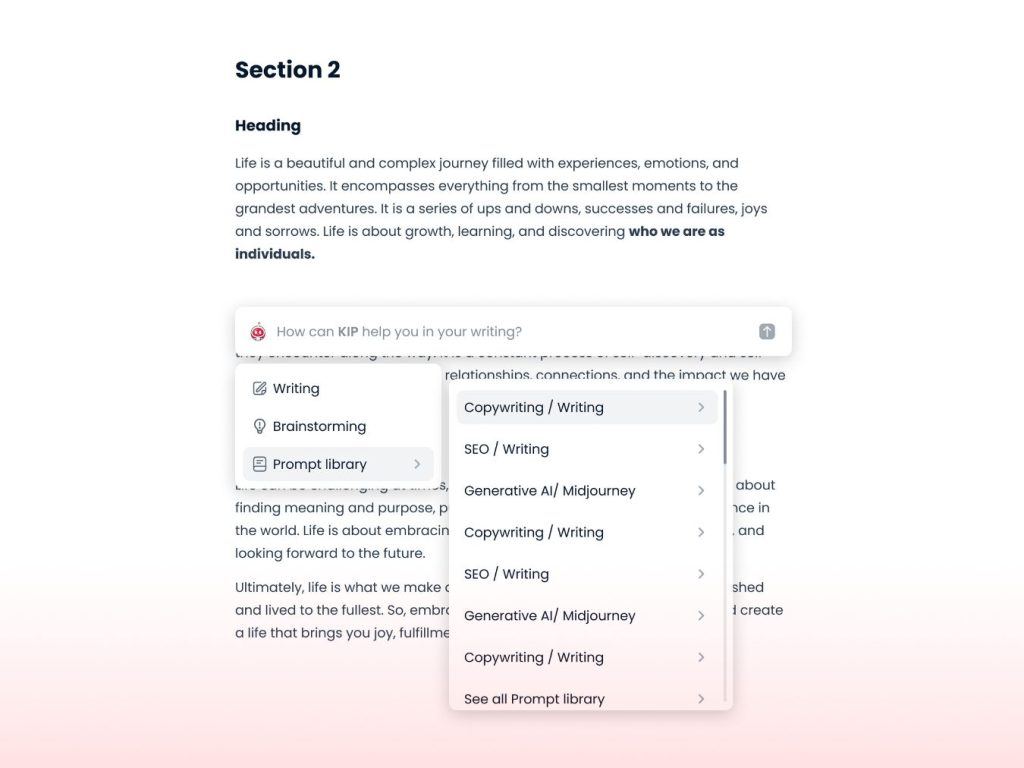
The primary function of both Dibbly Create and ChatGPT is to generate content based on your prompts. You need to know what you want to get from the AI tool before you even give it a prompt; otherwise, it can result in inaccurate outputs.
Dibbly Create excels in providing highly accurate responses tailored to your specific needs because it has extensive customization options. This allows you to fine-tune your prompts for more precise output.
Dibbly Create guides you through the prompt engineering process, which is a key feature. Here’s a screenshot of the KIP Generate screen:
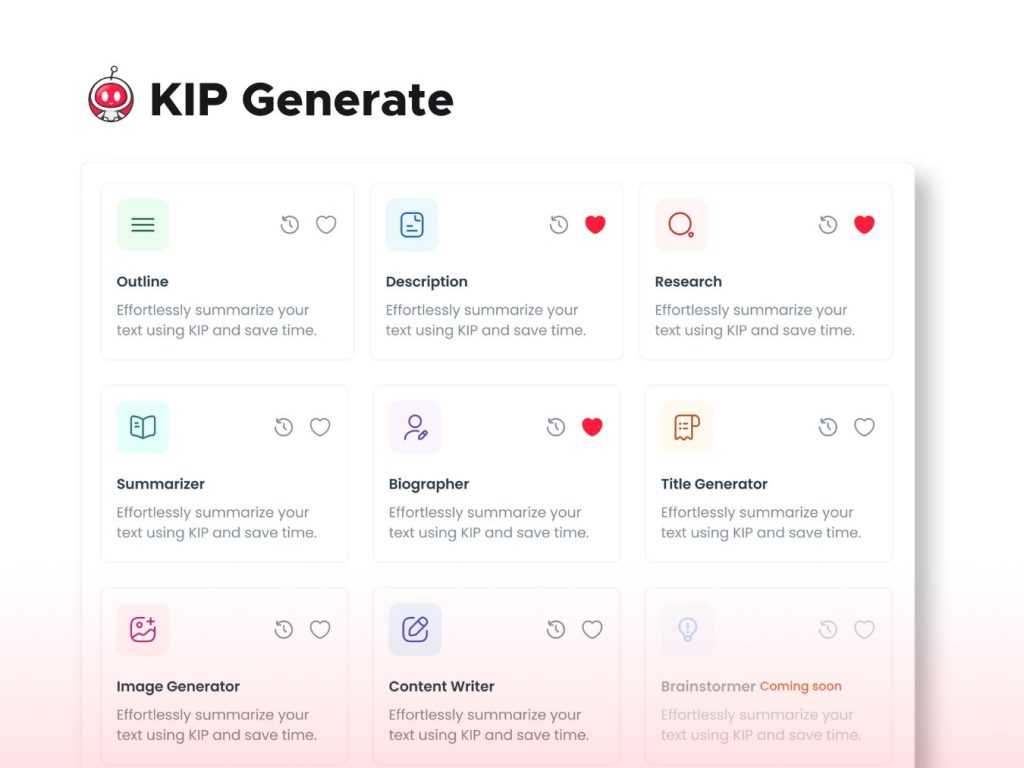
As you can see, KIP Generate, the Dibbly Create content generation tool, provides a variety of initial prompts such as writing, outlines, research, and more. This feature is available in addition to their regular KIP Chat feature, which is the closest analogy to ChatGPT.
In contrast, ChatGPT, while robust, focuses mainly on the chat feature. It does not have promo selection tools, and you are responsible for fine-tuning the entire input. ChatGPT still has some prompt ideas, as shown in the screenshot below.
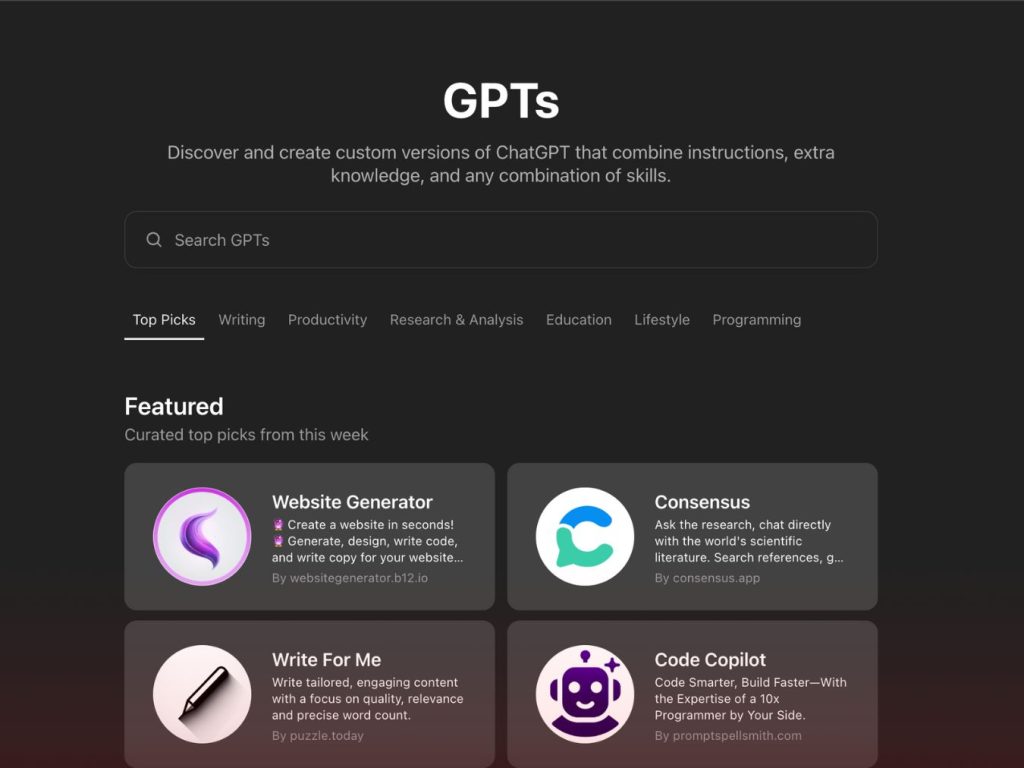
As you can see, ChatGPT does not provide specific writing prompts like Dibbly Create does. Because of this, ChatGPT sometimes struggles to maintain contextual accuracy, especially if you give it a complex or nuanced request. However, its diverse range of outputs can be advantageous for brainstorming.
Research
As a writer, you need to do a lot of research, regardless of the type of content you are creating. Initially, AI had some limitations, as most platforms weren’t connected to the internet, and many still aren’t. You need reliable, timely sources for proper content.
Dibbly Create Offers Advanced Internet Research
Dibbly Create integrates several advanced research tools that enable you to access various databases and real-time information effortlessly, as it can use the internet. This feature is available with the KIP Generate tools but not for the normal Chat.
The research tool offers a variety of research types, which is truly amazing. In addition to being able to access the internet for credible sources during content generation, Dibbly Create has specific tools for the preparation phase.
Here’s a breakdown:
- Amazon Research: Analyzes search terms, books, and categories.
- YouTube Research: Dissects videos using topics, search terms, key takeaways, and so on.
- Google Research: Scrutinizes the article’s overview, content, search terms, competitive analysis, etc.
You will need a Professional subscription to use this feature, but it is definitely worth it if you consider how much time you are saving.
ChatGPT Has Limited Internet Research Abilities
ChatGPT’s research functionality faces limitations because it has a fixed knowledge base that only goes up until September 2021, specifically on lower subscription plans. Essentially, you can’t get recent research or current trends for your content topic, nor does ChatGPT offer refined research tools like those described for Dibbly Create.
For a monthly fee, you can access real-time internet browsing with ChatGPT, but this feature isn’t included automatically with all paid plans. You will need to use the GPT-4 model through a paid subscription, and then you still need to pay an additional amount for real-time research. The team or enterprise subscriptions do not automatically include this feature; you must request and pay for it separately.
Summarizer Tool
When you do your own research, it’s likely that you will have to read through many documents, which can take a long time. There are author productivity tools you can use to make this process easier, more specifically, summarizing tools.
Dibbly Create has a Summarizer Tool as a standard feature, and it effectively condenses long texts into concise summaries. You can upload documents or input text, and the AI quickly provides a clear and accurate synopsis. It can also summarize video content, offering you quick access to information without consuming extensive time.
ChatGPT is also capable of summarizing texts, but it typically requires explicit prompts and supervision from you to ensure they are accurate and relevant. You may have to refine the responses multiple times to get a satisfactory summary.
Content Generation
You can no longer ignore the power of AI in content creation. It’s an amazing tool that can assist you throughout your entire writing process, with features tailored to each stage. Content generation is really where the Dibbly Create vs. ChatGPT rivalry exists.
Outline Generator
Every content project starts with an outline and title. Dibbly Create offers both of these features for various types of content, including books, articles, and blog posts.
Dibbly Create has intuitive templates that allow you to input brief descriptions, target audience details, and relevant keywords. Based on this information, the platform produces well-structured outlines and compelling titles.
The generated outline even includes competition research, reader pain points, and objectives for the content. You can easily copy the chapter outline when you use the Content Writer feature.
It takes about 10 minutes for Dibbly Create to generate the entire outline.
In contrast, ChatGPT generates outlines and titles primarily through conversational prompts. You need to give detailed instructions and iteratively refine your requests to achieve the desired outputs. ChatGPT will not guide you in giving additional information.
While ChatGPT can generate creative titles and outlines, you will need to intervene more frequently and use a process of trial and error. Occasionally, ChatGPT may become stuck in a repetitive loop, generating the same structure for each chapter, such as five main points and three subpoints. The iterative process can take longer to shape the outline to your liking.
Content Writer
The actual writing process is where you can save the most time using AI. Both Dibbly Create and ChatGPT have this ability, but the input process and subsequent results are vastly different.
Dibbly Create Content Writer Tool
Dibbly Create has its own Content Writer and you are guided through a variety of inputs before you can generate content. You have the choice between generating a sample or a full chapter, including introductions and conclusions for both fiction and non-fiction.
Some of the details you must provide include the word count range, chapter outline, tone and writing style, and target audience. You can also select whether KIP Generate should include research and if it should use its own sources or your specified sources.
You can then directly save the generated output to a project document for further modification. The content is well structured, with a clear introduction, headings, content, and key takeaways. If you choose to include research, an APA-formatted reference list will be available at the end of the chapter.
It takes about 10 minutes to generate a chapter, so a 30,000-word book with 10 chapters takes less than 2 hours to create in its entirety!
ChatGPT General Writer
ChatGPT does not have a dedicated content-writing tool. Instead, it focuses more on writing with AI in general. You will need to prompt ChatGPT with all the relevant information and stipulate a word count, but it’s easy to forget some details like tone or target audience.
The generated output varies greatly too. Sometimes, ChatGPT will provide a cohesive chapter that meets all your requirements. But it’s more likely that you will need to make drastic additional requests.
Some common issues are that the platform does not stick to the given word count, doesn’t provide sub-headings, or switches the tone and style halfway through a chapter. The examples don’t always fit within the context of the book either.
Another obstacle to writing content with ChatGPT is that you cannot create separate projects; the only option is separate chats. However, ChatGPT limits these chats to a specific word count or prompts, which may require you to divide your project across multiple chats. If you are writing a book, that means longer chapters will be split, and you have to remember all the details you gave the first time to ensure consistency.
It’s tough to say how long content generation with ChatGPT will take because it depends on the extent of your project, prompt details, and the number of iterations before all your requirements are met. It could be quick, or it may rob you of an entire day.
Book Description Generator
If you are an author, you know the importance of a good book description for marketing and sales purposes. It can be one of the most challenging pieces to write, but using AI writing tools can help.
Dibbly Create has a dedicated description tool that crafts high-quality content to attract future readers. Once again, you just need to capture a few details based on prompts, and a description is generated within minutes.
ChatGPT can also generate a book description for you, but you will need to give it all the relevant information. It does not have guided prompts or tell you what details are required for a proper description.
Editing Content
Regardless of whether you write content yourself or use an AI for writers, it will require editing. There is some common phrasing that all AI writing tools will produce; for example, “weaving a tapestry,” “navigating,” and “journey” appear quite frequently in AI-generated content. You need to address these aspects and ‘humanize’ the content to give it a personal touch.
Dibbly Create stands out in its versatility for content manipulation. The platform allows you to edit, rewrite, and format your texts with ease. You simply highlight the text you want to adjust and give KIP a prompt or choose one of the dropdown options.
With a click of a button, you can make major edits to large sections of text without feeding a bunch of instructions to the platform. Have a look at the screenshot below for some of the options:
Dibbly Create has a wide range of options for formatting content using traditional elements such as text alignment, different fonts, font sizing, highlighting, and text color. You can italicize or bold text and select heading styles, bullet points, numbered lists, and tables from a dropdown menu, which is more akin to what you would use in Google Docs. Dibbly | The Urban Writers also now boast with a new offering, our AI-to-Human Editing feature.
ChatGPT also has content manipulation abilities but to a lesser extent. You need to manually prompt the platform to make specific changes, leading to a more hands-on and iterative process. While this can be effective for custom edits and rewrites, it is often time-consuming.
Formatting text with ChatGPT is limited as the platform has a standard output method and does not save content or edits directly in a document format. You can ask the platform to present answers in paragraph format and use bullets, lists, or headings, but you need to give it a manual prompt.
If you want to edit certain words directly, change the font or formatting, or add customer elements, you will need to copy the details to a document before making changes. You can’t make these kinds of edits within the platform.
Finished Product
AI writing tools are great, but if you’re using AI in content creation, you’ll need a function to export the finished product. It can’t stay on the platform forever; you want readers to see it!
Customized Formatting Tools From Dibbly Create

Since you edit content directly on Dibbly Create, you can simply click the export button and choose how you want to download your document. Choose the file format (MS Word or PDF), the page size—including common print book sizes—and the content you want to include, like a title page, table of contents, page numbers, and so on.
During the export stage, you can choose fonts and alignments for section headings. For the paragraph text, there are options for fonts, line height, and other features. The preview window will display these elements throughout the document.
The other export option uses pre-created templates for eBooks, or you can create your own templates if you publish books frequently. Once again, you can select your preferred formatting options, apply the template to your document, and export it as an EPUB or PDF to your preferred device size. Options include Kindle, iPad, iPhone, and Samsung Galaxy. The entire process takes mere minutes.
ChatGPT Provides Raw Products
ChatGPT does not have extensive document formatting or design elements to export a finished product. Your only option is to copy the chat—which will include all prompts and answers—and paste them into a separate document. It’s unlikely that your entire project will be in one saved chat, so you will probably need to repeat this process for several chats.
Once all the content has been copied to the document, you can manually edit the content, format headings, insert a table of contents, and so on. It is possible, but it is time-consuming. You will need to repeat this process and adjust the page size if you want to export the content for different devices or book formats. Remember to check the KDP requirements for the file before you upload it.
Platform Usability and Functionality
How do you select your preferred technology tools? Sure, features play a role, but it also helps if the tool and platform are easy to use. Nothing is worse than having a steep learning curve when all you want to do is get a task done.
Both Dibbly Create and ChatGPT are advanced AI platforms with specific features to make your life easier. How do they compare when it comes to usability and functionality?
User Interface and Ease of Use
The user interface is what you see when you use a platform, including design, functionality, and accessibility.
Dibbly Create’s Intuitive Touch
Dibbly Create has a carefully crafted interface, designed to enhance your experience. It has an intuitive navigation system, making it easy to access features without confusion. The user-friendly design has clean lines and easy-to-read fonts.
The dashboard presents a logical arrangement of tools and options, and you can sort your files and folders in a way that makes sense to you. The top of the page displays your tokens and subscription management info.
From the dashboard, you can access your chosen document or feature. The documents and tools are easy on the eye and have a clean design. There is a navigation pane on the left side of the screen. You can access the different tools by clicking on the KIP icon, and the word count is visible at the top right of the page.
Due to the number of tools and capabilities of the platform, it may take a bit longer to become fully proficient in using Dibbly Create. Luckily, there are many tutorials, resources, and videos to help you.
Simple, Efficiency for ChatGPT
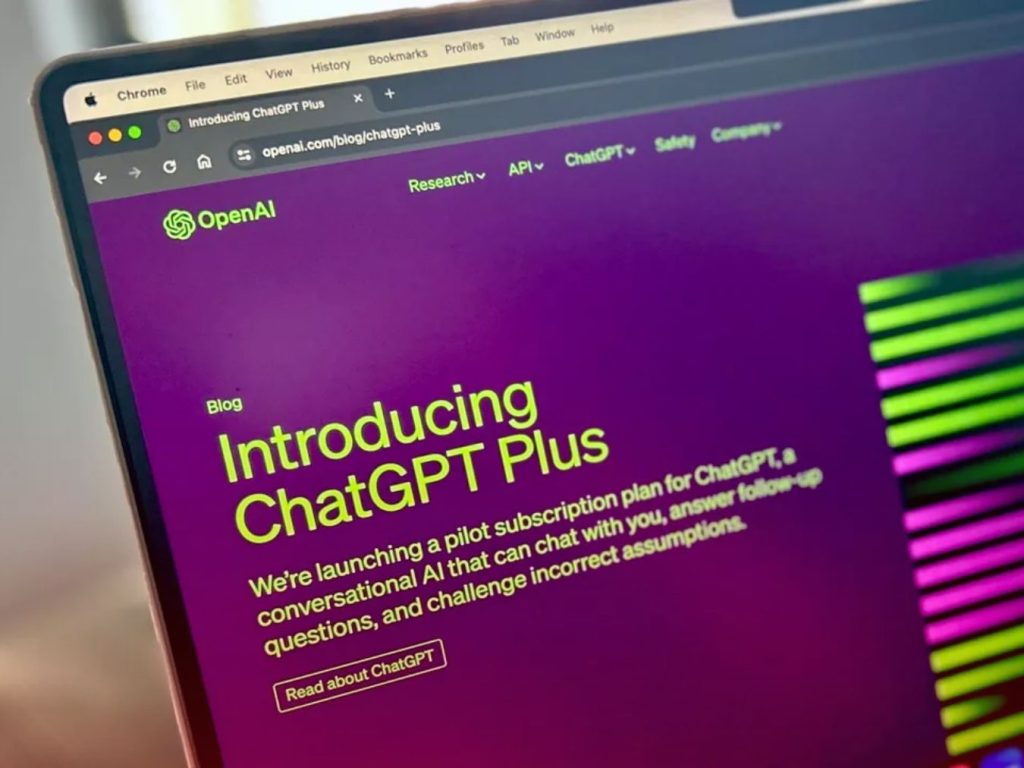
ChatGPT has a simple interface that is extremely efficient. We designed the layout with prominent input fields and minimalistic graphics to facilitate quick interactions. The platform uses intuitive controls, and you can easily initiate conversations, adjust settings, or review previous chats.
The overall visual appeal is sleek, and the clean user interface emphasizes functionality over aesthetics. You can engage with the tool immediately without needing tutorials or guidance, which can be beneficial if you want to generate content quickly.
Writing Assistance
The idea of AI-powered writing tools is to make the process more efficient for you. Based on the features discussed previously, it’s clear to see how both Dibbly Create and ChatGPT fulfill these roles.
Dibbly Create has a distinct advantage because it provides comprehensive writing assistance tailored specifically for authors and content creators. The prompt library is a standout feature to help spark creativity and guide you through the various phases of your writing project. The research tool is another huge benefit, as it cuts down your research time drastically.
Watch the video below to see it in action.
ChatGPT, on the other hand, leverages a powerful language model to generate relevant text based on your input. Your prompts can be as wide or as narrow as you want. While it may not have a specialized toolset like Dibbly Create, ChatGPT is still flexible and allows you to tailor your experience based on your unique needs.
Collaborative Features
If you choose to use author productivity tools, the idea is to save time. In this regard, collaboration with other people who need to work on or review your document is a key element. Both platforms show significant differences in collaboration.
Dibbly Create provides real-time collaboration tools and allows multiple users to work on the same document simultaneously. It’s a great feature for teams working on joint projects or if you need an editor to check your document quickly. You can invite collaborators via email and set permissions for viewing, editing, or commenting to ensure controlled and efficient teamwork.
On ChatGPT, you cannot collaborate directly with other people. It needs to be integrated into other platforms or workflows, but this integration requires additional setup and customization, so it is not a simple solution. This could work in a team setting, but it isn’t ideal if you are the main person working on your project and only need some external feedback or assistance.
Pricing
Experts spend a lot of time and use a variety of technologies to create AI writing tools, and although there are some free versions available, they do have limitations. Here’s what you can expect to pay for with Dibbly Create and ChatGPT.
Dibbly Create Pricing
Dibbly Create has two options: Free or professional. The package you choose will give you a certain number of tokens, which are used each time the AI tool completes an action for you.
Dibbly Create Free
The free version is a basic test plan for Create. It gives you 20,000 tokens per month, as well as unlimited projects. However, you only get 1GB of storage and limited access to ChatKIP.
Dibbly Create Pro
Create Pro is what you really want to get! A Pro subscription gives you unlimited projects, 10GB of storage, full access to ChatKIP, an intelligent research tool, a smart outline generator, an AI book description generator, and an intelligent summarizer.
Pricing is based on the number of tokens you purchase and whether you take a monthly or annual subscription.
You can expect to pay only $22.97 per month for 1,000,000 tokens, and that amount decreases if you opt for more tokens.
With a yearly subscription, you get two months free, dropping the price to $19.14 per month.
Additional Tokens
If you find yourself running out of tokens while busy with a project, you can do a token top-up. Pricing starts at $3 for 100,000 tokens, and you will get a discount if you buy more tokens at once. For example, 1,000,000 tokens cost $20.
ChatGPT Pricing
The pricing for ChatGPT is based on the plan you choose. Options include a free plan, ChatGPT Plus, Team, and Enterprise solutions. The latter two are for teams and organizations instead of individual writers.
ChatGPT uses tokens for each prompt, but it also restricts the number of messages you can send and receive in a particular period.
ChatGPT Free
The free version gives you access to GPT-4o as well as some access to GPT-4o Mini. You get limited access to data analysis, image generation, and other advanced features.
It’s unclear how many tokens or prompts you get, but there is a limit. Once you reach it, the platform will show you a message stating that you can only use it after a certain time.
ChatGPT Plus
ChatGPT Plus has more features and a larger volume of requests. Depending on the GPT model you use, you can send 40 or 80 messages every 3 hours. This subscription gives you access to all the GPT models, as well as data analysis, web browsing, and image generation with Dall·E.
The cost of a monthly subscription is $20, and there is no annual option. You also can’t pay to increase the volume of messages you can send in a period.
The Best AI Writing Assistant
If you are looking for author productivity tools that will make your writing process smoother and more efficient, then it makes sense to turn to AI. It’s an incredible technology that can help you, as a writer, deliver your best work.
Which platform will you turn to?
While ChatGPT offers robust AI-driven assistance across various domains, Dibbly Create’s design for writers and publishers provides specialized tools that increase your productivity and content quality.
There are three main differences between the platforms:
- Internet Accessibility: Dibbly Create offers real-time internet access for book research and to write cited content. ChatGPT only has information from before September 2021 and doesn’t offer real-time internet access by default, even with paid plans.
- Target User: Dibbly Create has been developed for writers specifically, so the tools are relevant and all-encompassing for the content generation process. ChatGPT is a general AI tool for anyone and doesn’t have features specifically crafted for writers.
- Editing and Formatting Content: Dibbly Create allows you to edit and format your content directly in a document on the platform. ChatGPT does not have any features that allow for editing or formatting on the platform, so you have to use another program for those functions.
The question remains: What is the best AI writing assistant?
That accolade undoubtedly goes to Dibbly Create!
Our Final Verdict
In this writing software comparison, we considered Dibbly Create vs. ChatGPT.
Dibbly Create is structured better for crafting comprehensive books and articles because it was specifically designed to assist you as writers, authors, and self-publishers. It provides AI writers with project templates based on different genres and formats, allowing you to follow a coherent structure throughout your writing process.
Dibbly Create’s ability to integrate human creativity with its AI capabilities results in polished and publishable content. The variety of tools and features creates an all-in-one platform that assists you from idea creation to preparing and exporting the final product.
ChatGPT, while versatile and powerful, functions primarily as an interactive assistant that responds to your conversational inputs. Although it can write comprehensive content, you must guide the AI closely to ensure coherence and continuity in longer outputs.
The interaction required by ChatGPT to create longer-form content requires a certain level of expertise and patience. It is better suited for experienced writers if you prefer iterative content development.
Overall, the platform you choose to use depends on your unique needs. If you are just getting started with AI, you might find ChatGPT acceptable. But if you are a writer who wants a powerhouse tool that guides you throughout the entire process and has specialized writing tools, then Dibbly Create is the sensible option.


